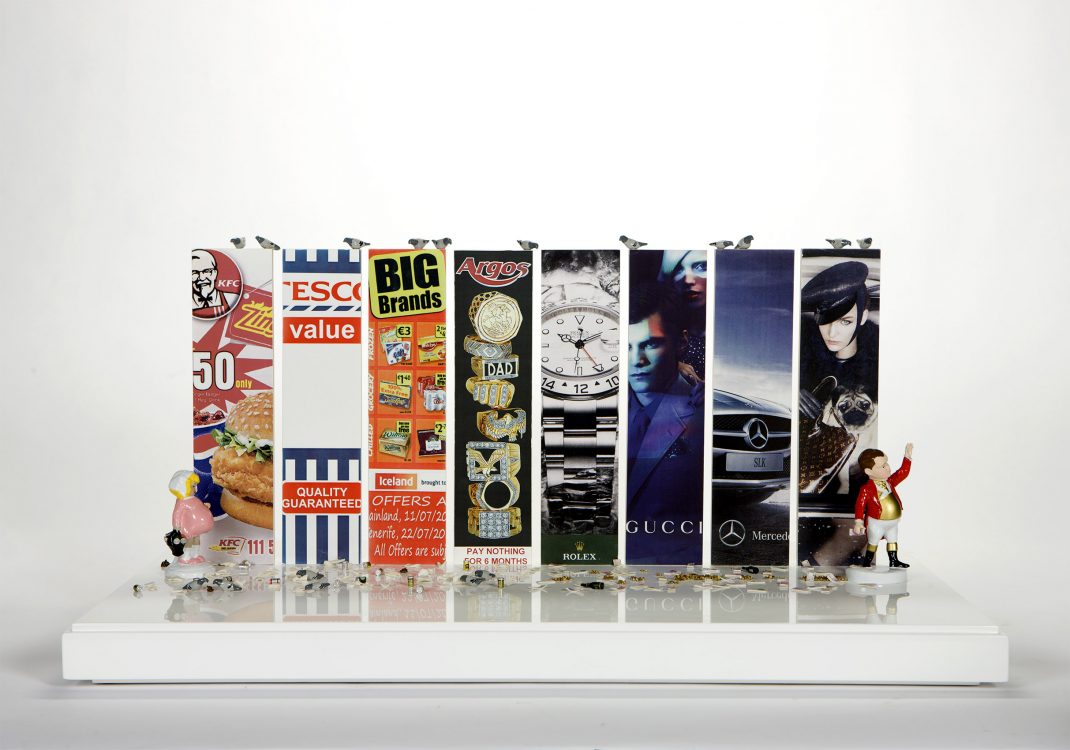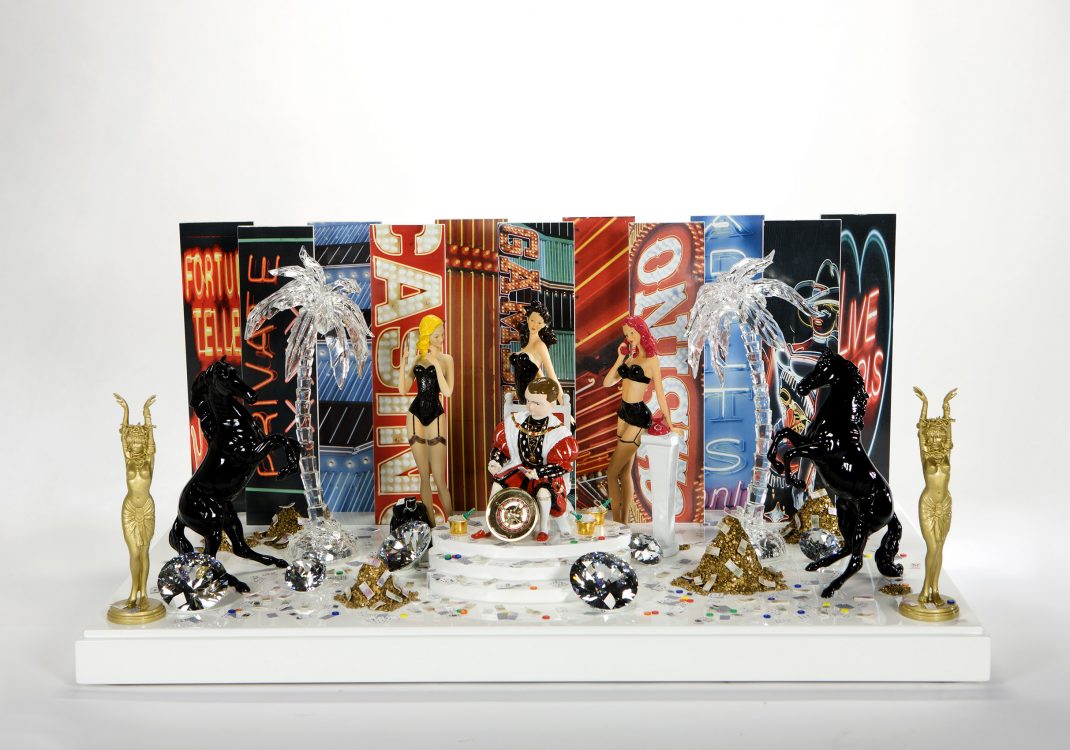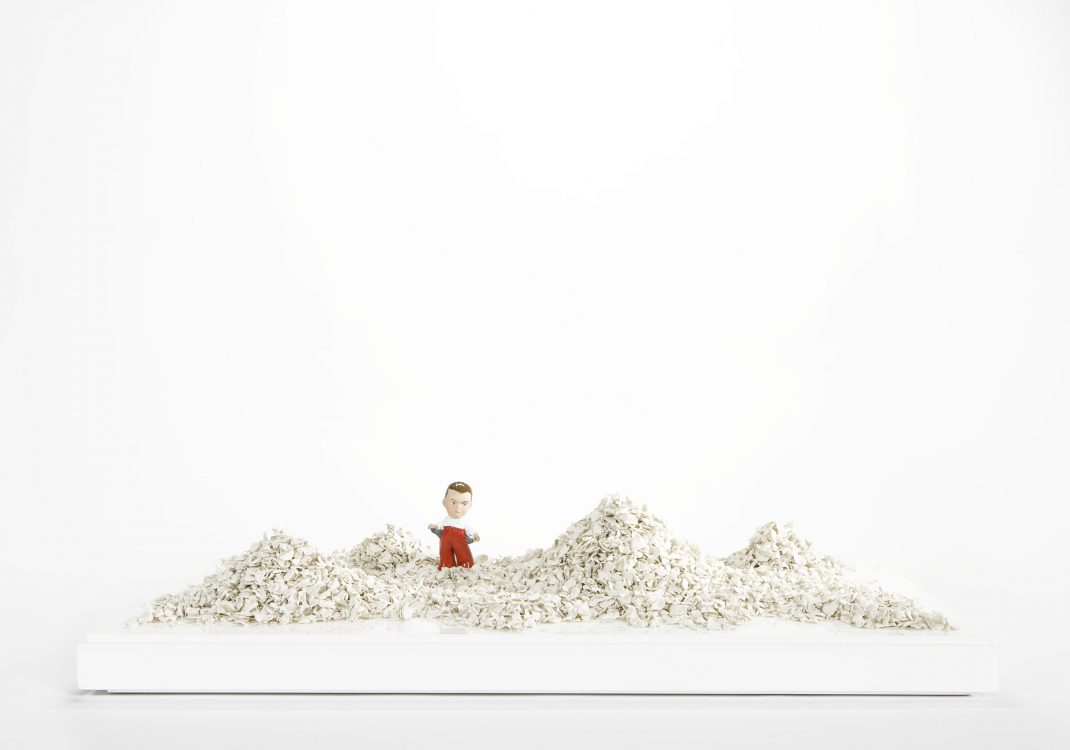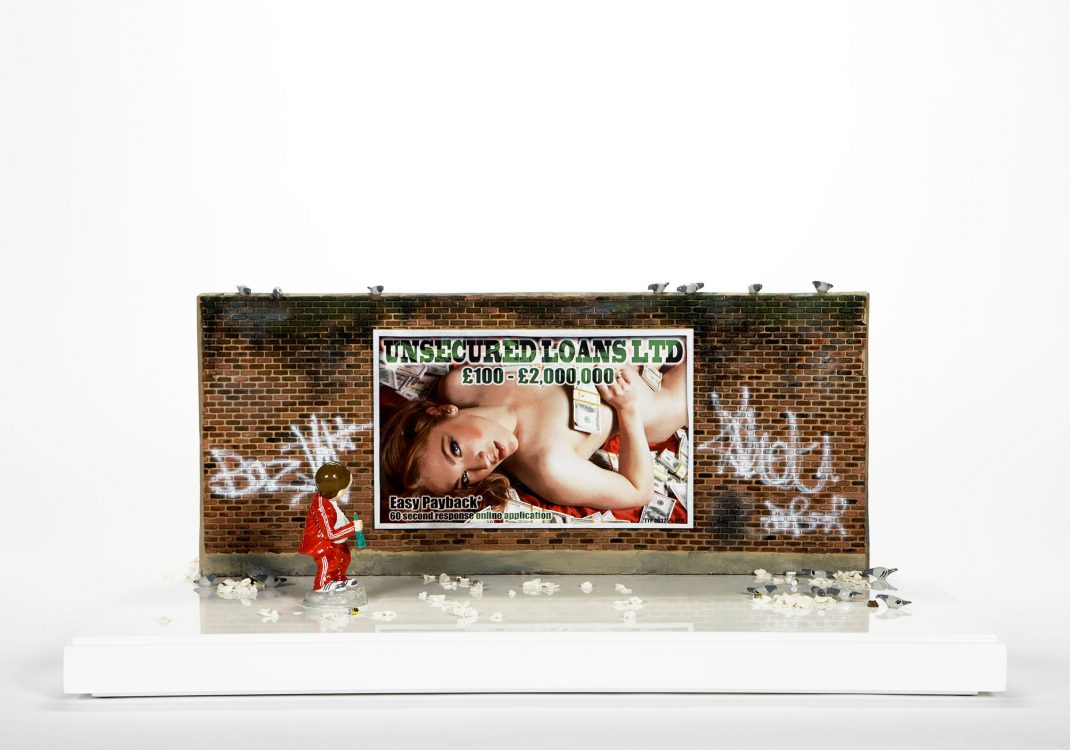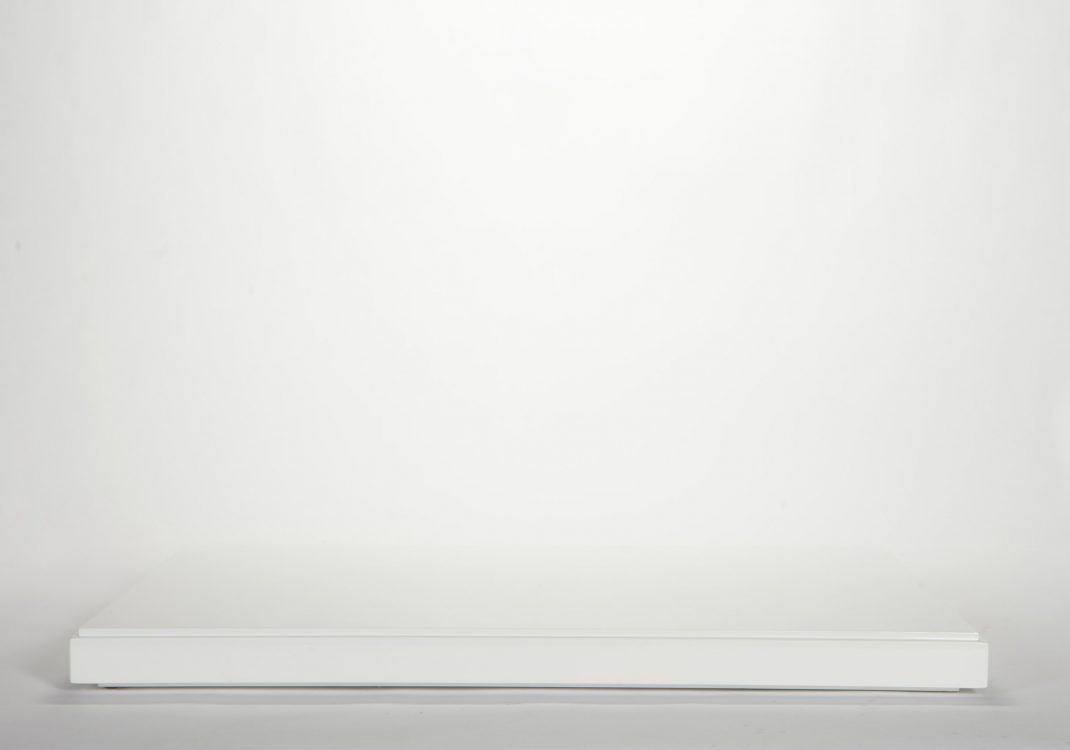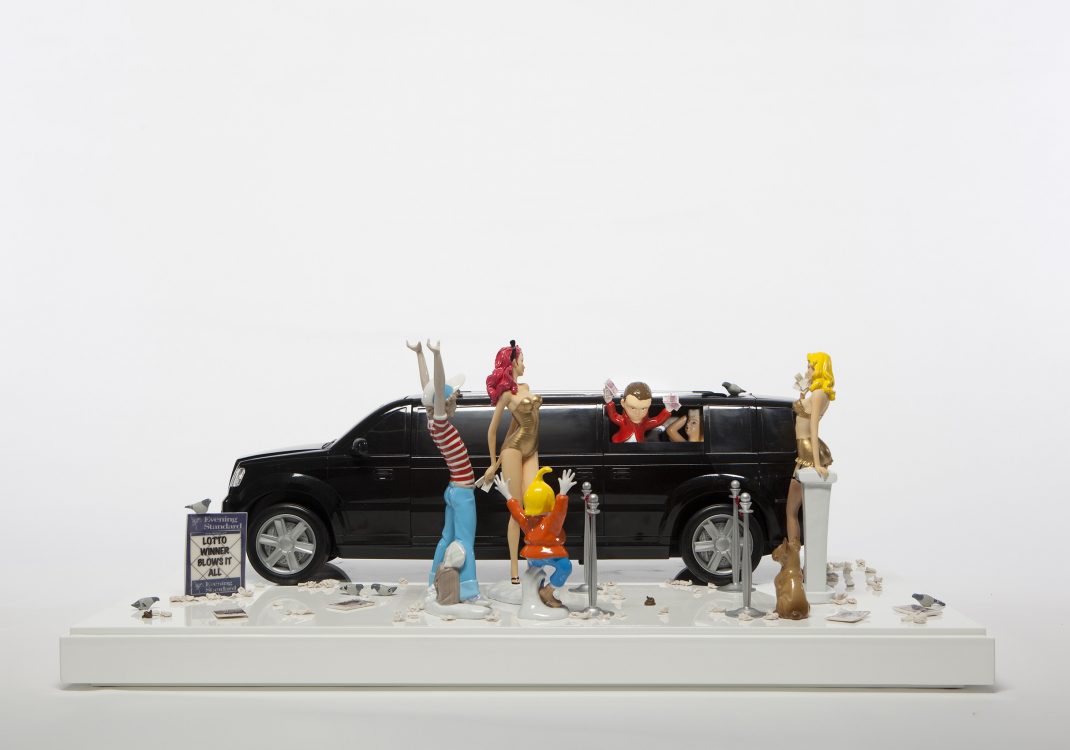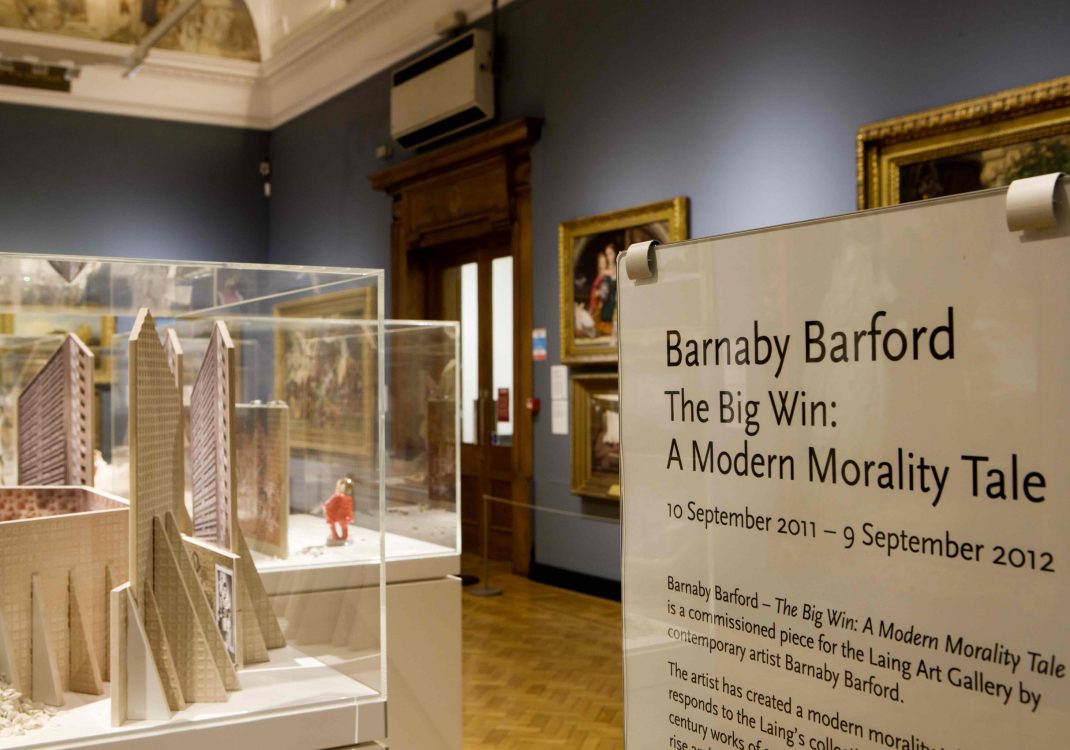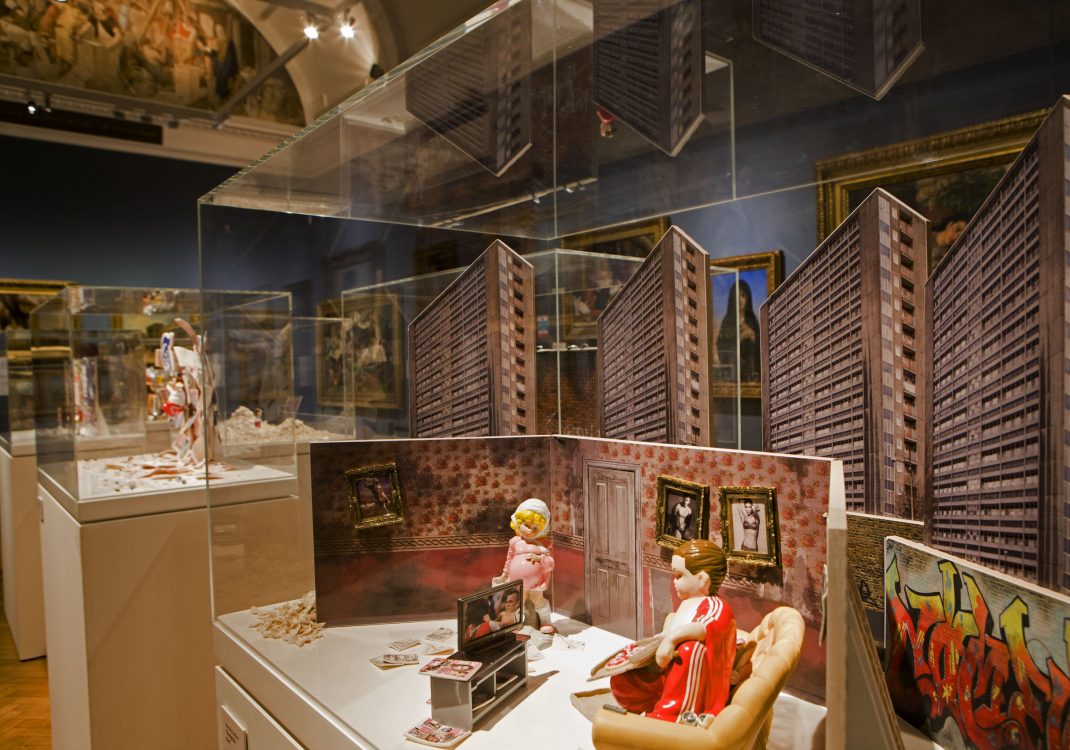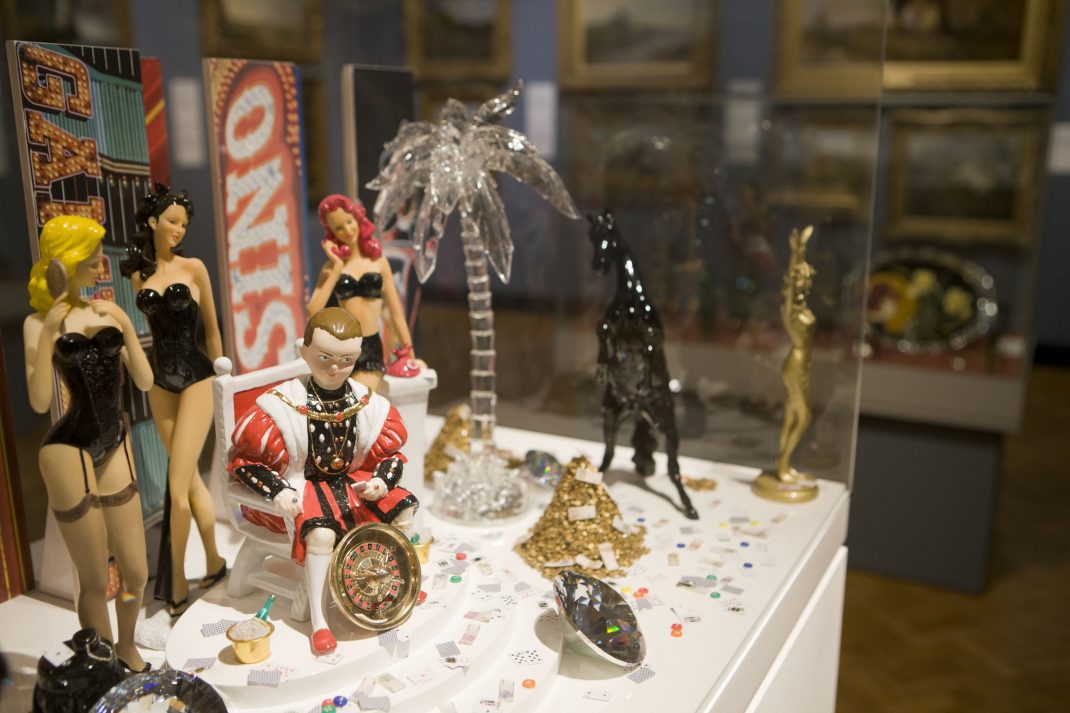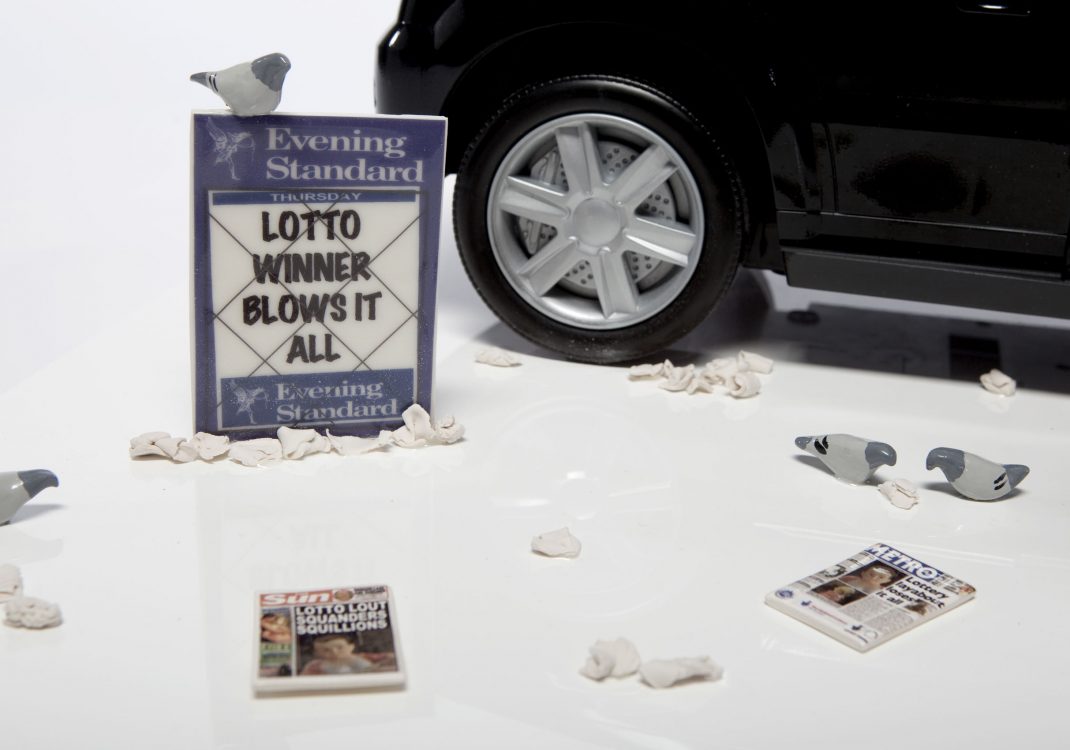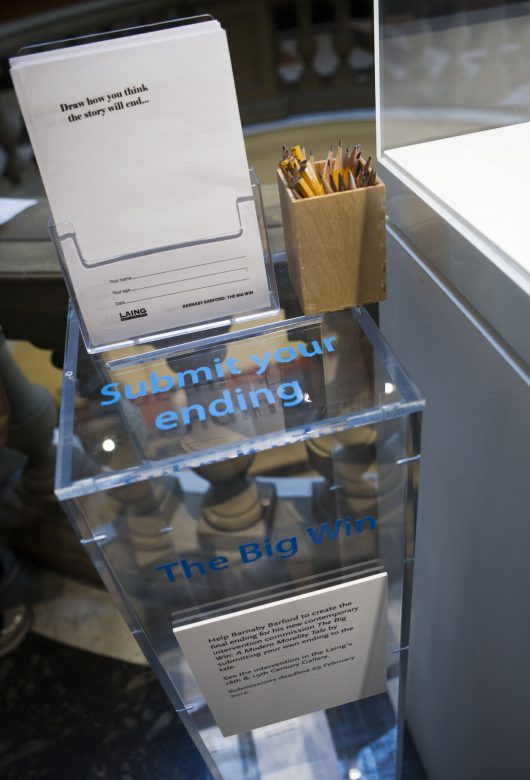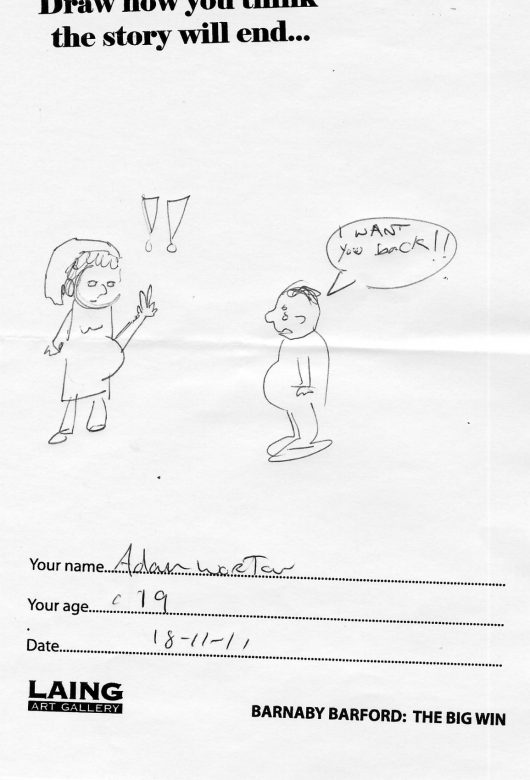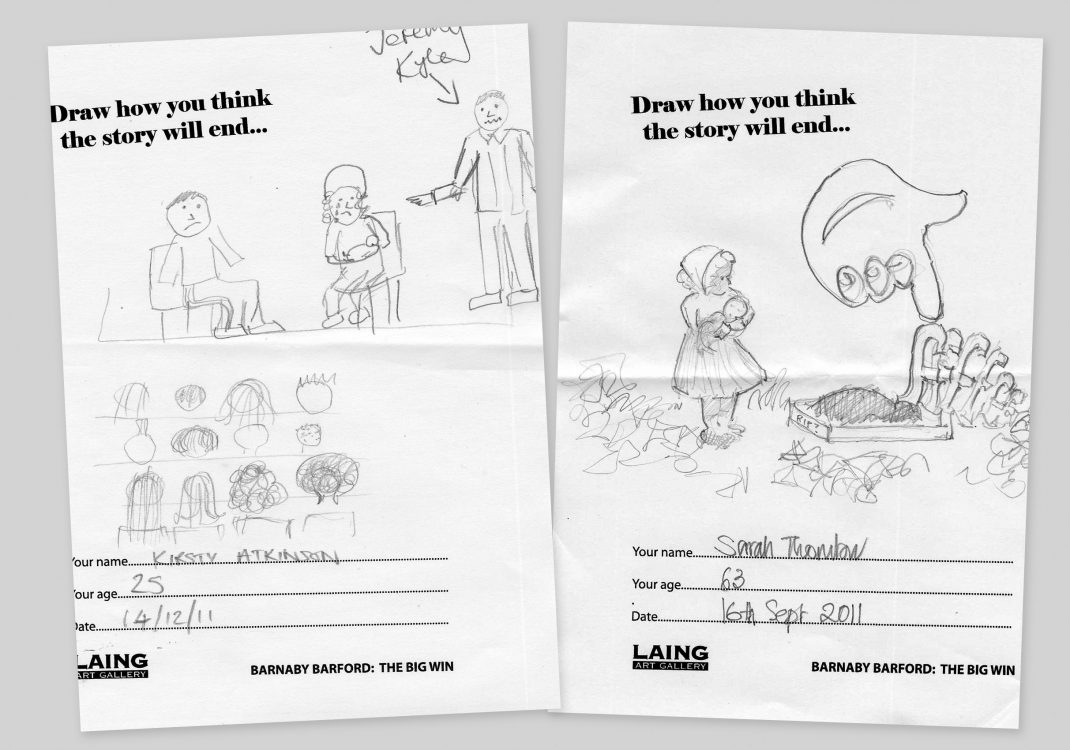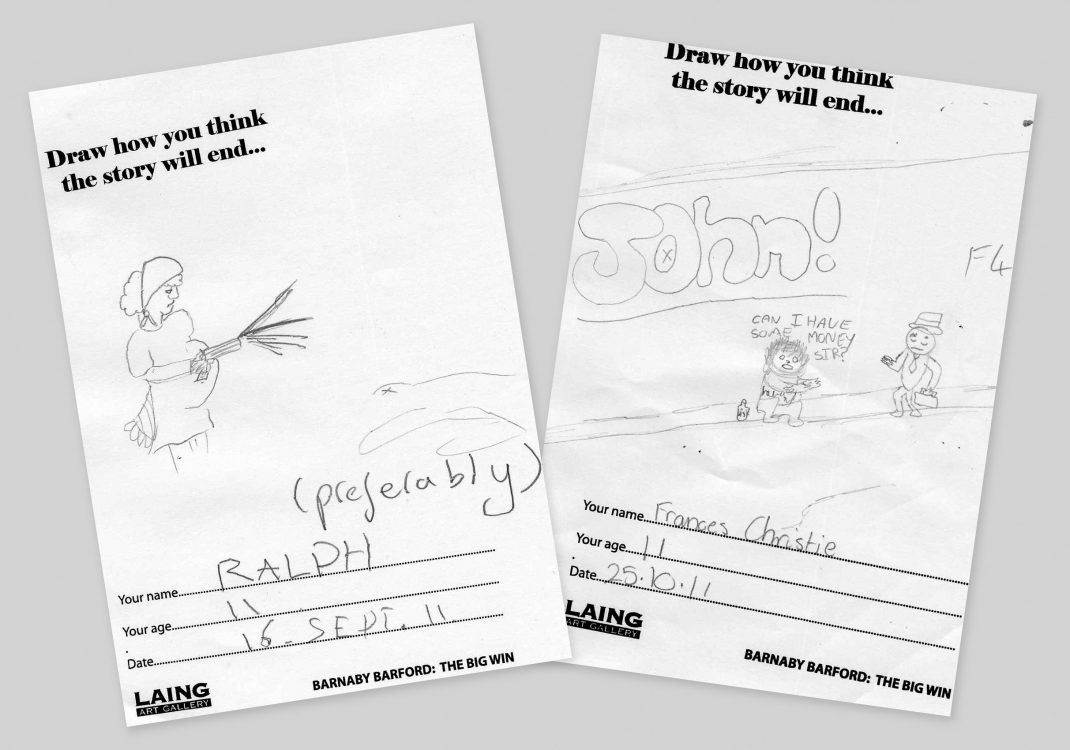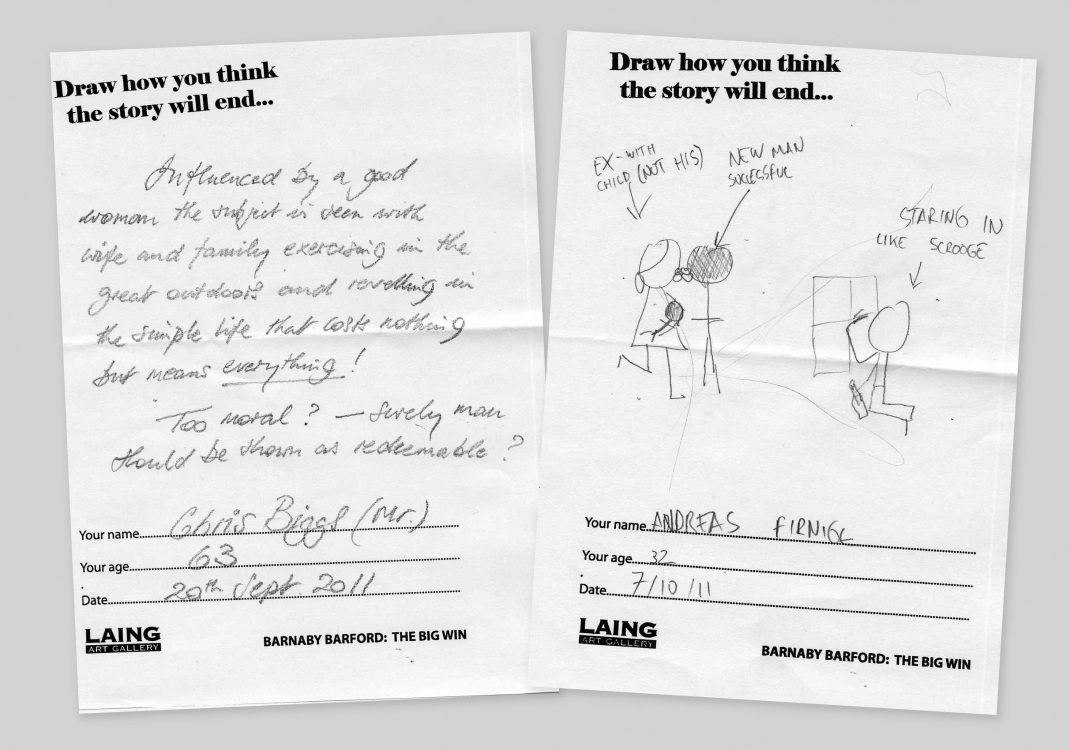In 2011, Barnaby Barford was invited to make an intervention into The Laing Art Gallery‘s 18th and 19th Century galleries. He created The Big Win: A Modern Morality Tale, a series of sculptures, which were shown as a year-long participatory exhibition at the Newcastle’s institution.
The extensive collection includes an array of aristocratic paintings as well as those of the working classes, often romanticised in their presentation. Barford explains “I took this as my inspiration, drawing a comparison with current affairs, the ingrained rich-poor divide and the demonisation of entire sections of society which is prevalent throughout history.





